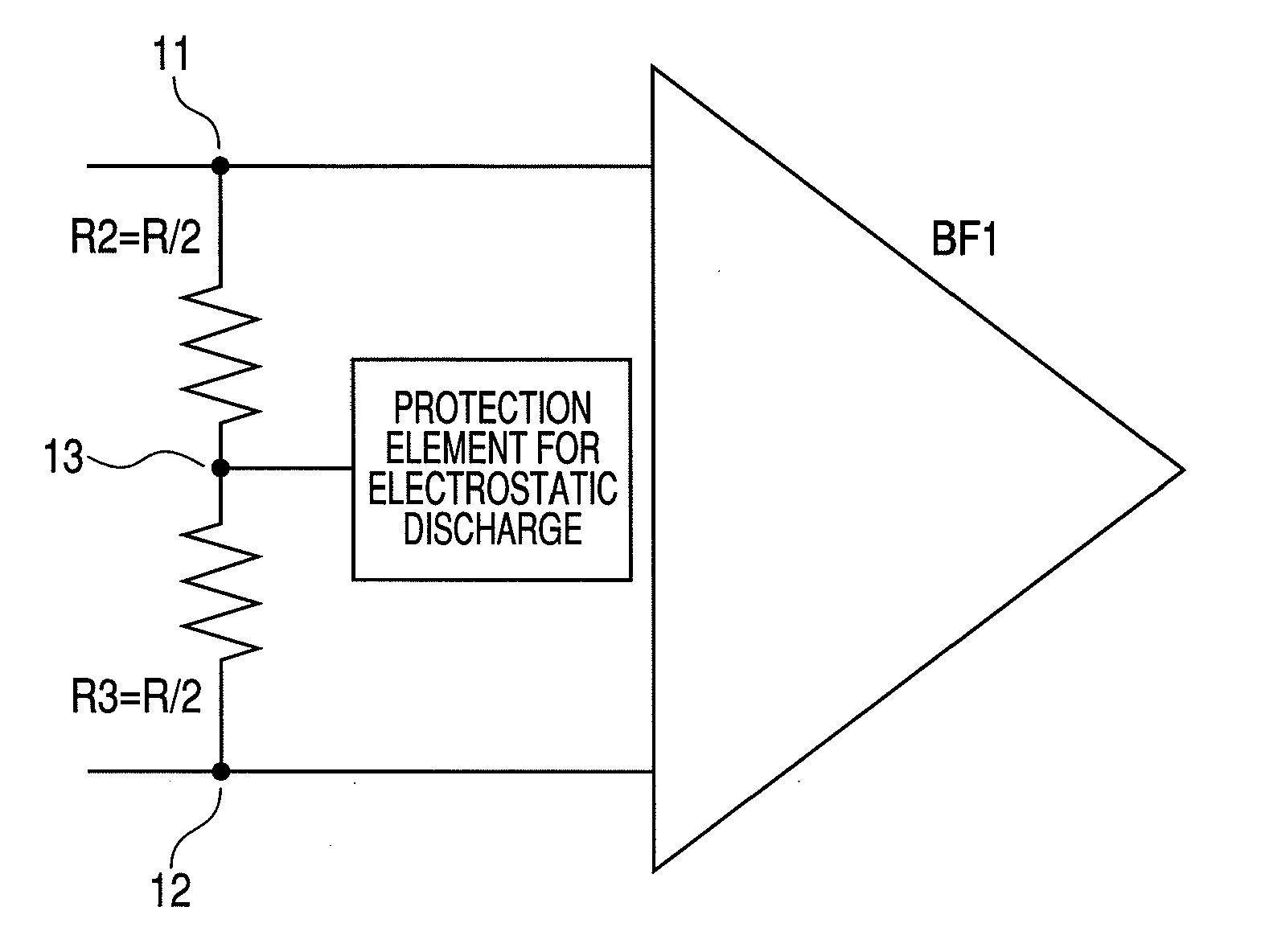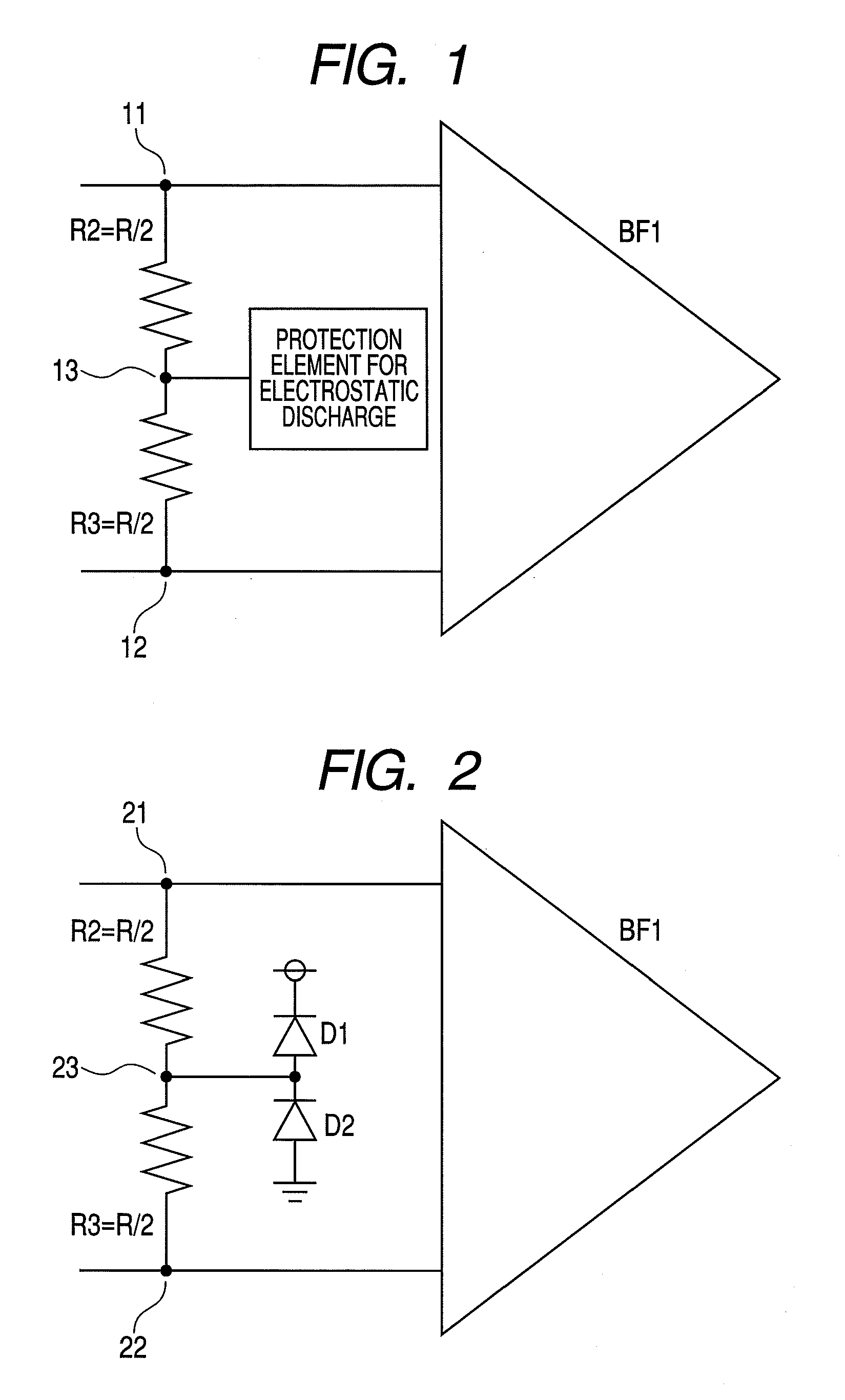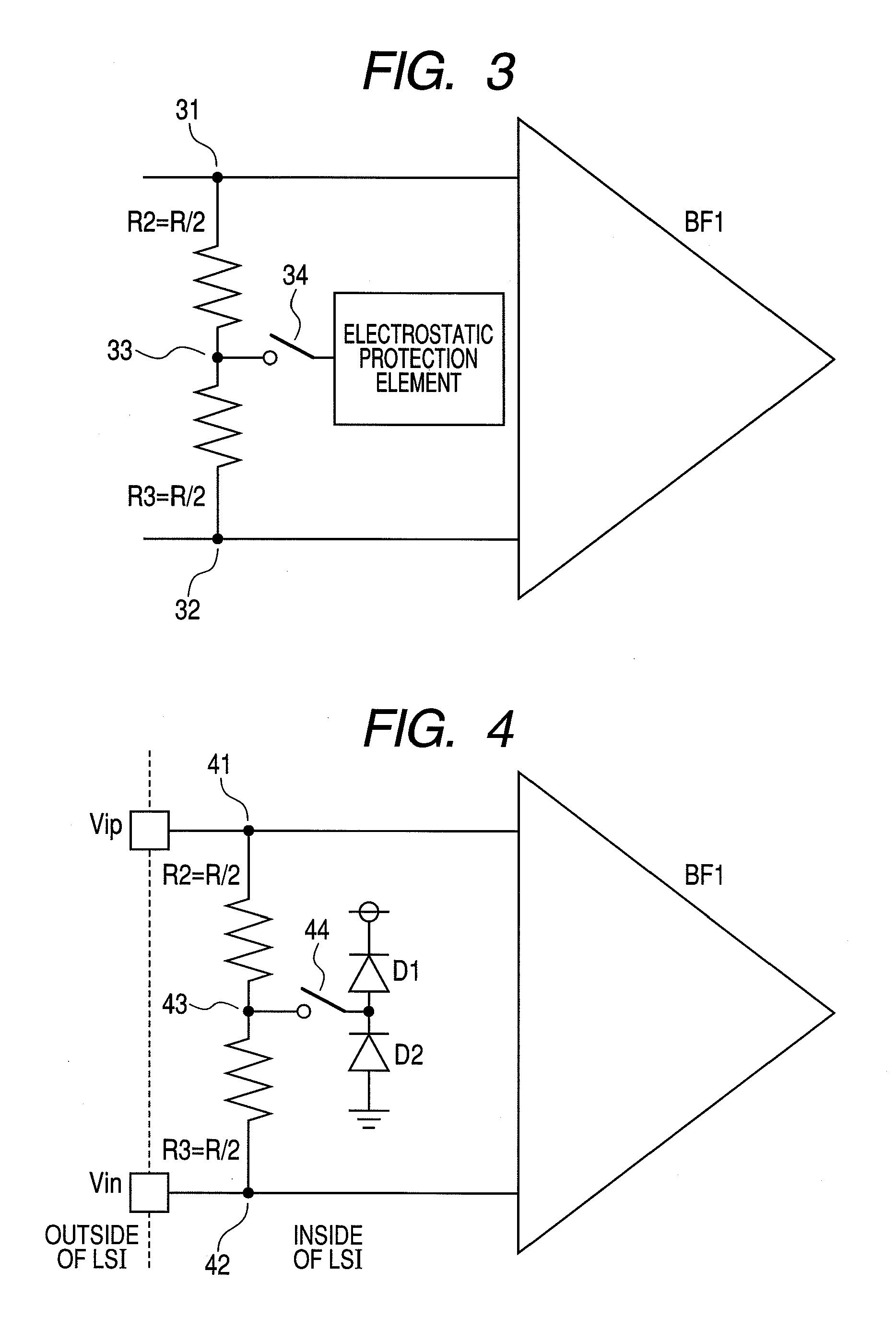Semiconductor integrated circuit device
a technology of integrated circuit devices and semiconductors, applied in the direction of amplifier protection circuit arrangements, diodes, amplifiers with semiconductor devices/discharge tubes, etc., can solve problems such as deterioration of s/n ratio to noise from the outside, accompanies drawbacks, and signal transfer frequency bands
- Summary
- Abstract
- Description
- Claims
- Application Information
AI Technical Summary
Benefits of technology
Problems solved by technology
Method used
Image
Examples
first embodiment
[0041]FIG. 1 is a schematic diagram of a first embodiment of a semiconductor integrated circuit device of the present invention. Differential input terminals 11 and 12 of a differential input buffer BF1 are connected to each other by a terminator R consisting of a series connection of resistances R2 and R3, and the electrostatic protection element is connected to a junction point of the resistances R2 and R3, namely, an intermediate node 13 of the terminator R. The differential input buffer BF1, the differential input terminals 11, 12, the resistances R2, R3, the intermediate node 13, and the electrostatic protection element are monolithically formed on a common semiconductor substrate, and constitute the semiconductor integrated circuit device. The electrostatic protection element is provided in order to prevent a malfunction from arising in the differential input buffer BF1 by electrostatic noises originating in the differential terminals 11, 12, for example, when attaching the se...
second embodiment
[0044]FIG. 2 is a schematic diagram of a second embodiment of the semiconductor integrated circuit device of the present invention. This embodiment is an example of the first embodiment in which diodes are used as the electrostatic protection element therein. Differential input terminals 21 and 22 of the differential input buffer BF1 are connected with each other by the terminator R consisting of a series connection of the resistances R2 and R3, and an anode side of a diode D1 and a cathode side of a diode D2 are commonly connected to the junction point of the resistances R2 and R3, namely, an intermediate node 23 of the terminator R. The two diodes D1, D2 function as the electrostatic protection element by being commonly connected to the intermediate node 23. The differential input buffer BF1, the differential input terminals 21, 22, the resistances R2, R3, the intermediate node 23 and the diodes D1, D2 are monolithically formed on a common semiconductor substrate, and constitute t...
third embodiment
[0047]FIG. 3 is a schematic diagram of a third embodiment of the semiconductor integrated circuit device of the present invention. This embodiment is an embodiment having a configuration capable of separating the electrostatic protection element that gives the large input load at the time of actual operation in order to attain further speed enhancement from the first embodiment. Differential input terminals 31 and 32 of the differential input buffer BF1 are connected to each other by the terminator R consisting of the series connection of the resistances R2 and R3, and the electrostatic protection element is connected to the junction point of the resistances R2 and R3, namely, an intermediate node 33 of the terminator R through a switch 34. The differential input buffer BF1, the differential input terminals 31, 32, the resistances R2, R3, the intermediate node 33, the switch 34, and the electrostatic protection element are monolithically formed on a common semiconductor substrate, a...
PUM
 Login to View More
Login to View More Abstract
Description
Claims
Application Information
 Login to View More
Login to View More - R&D
- Intellectual Property
- Life Sciences
- Materials
- Tech Scout
- Unparalleled Data Quality
- Higher Quality Content
- 60% Fewer Hallucinations
Browse by: Latest US Patents, China's latest patents, Technical Efficacy Thesaurus, Application Domain, Technology Topic, Popular Technical Reports.
© 2025 PatSnap. All rights reserved.Legal|Privacy policy|Modern Slavery Act Transparency Statement|Sitemap|About US| Contact US: help@patsnap.com



